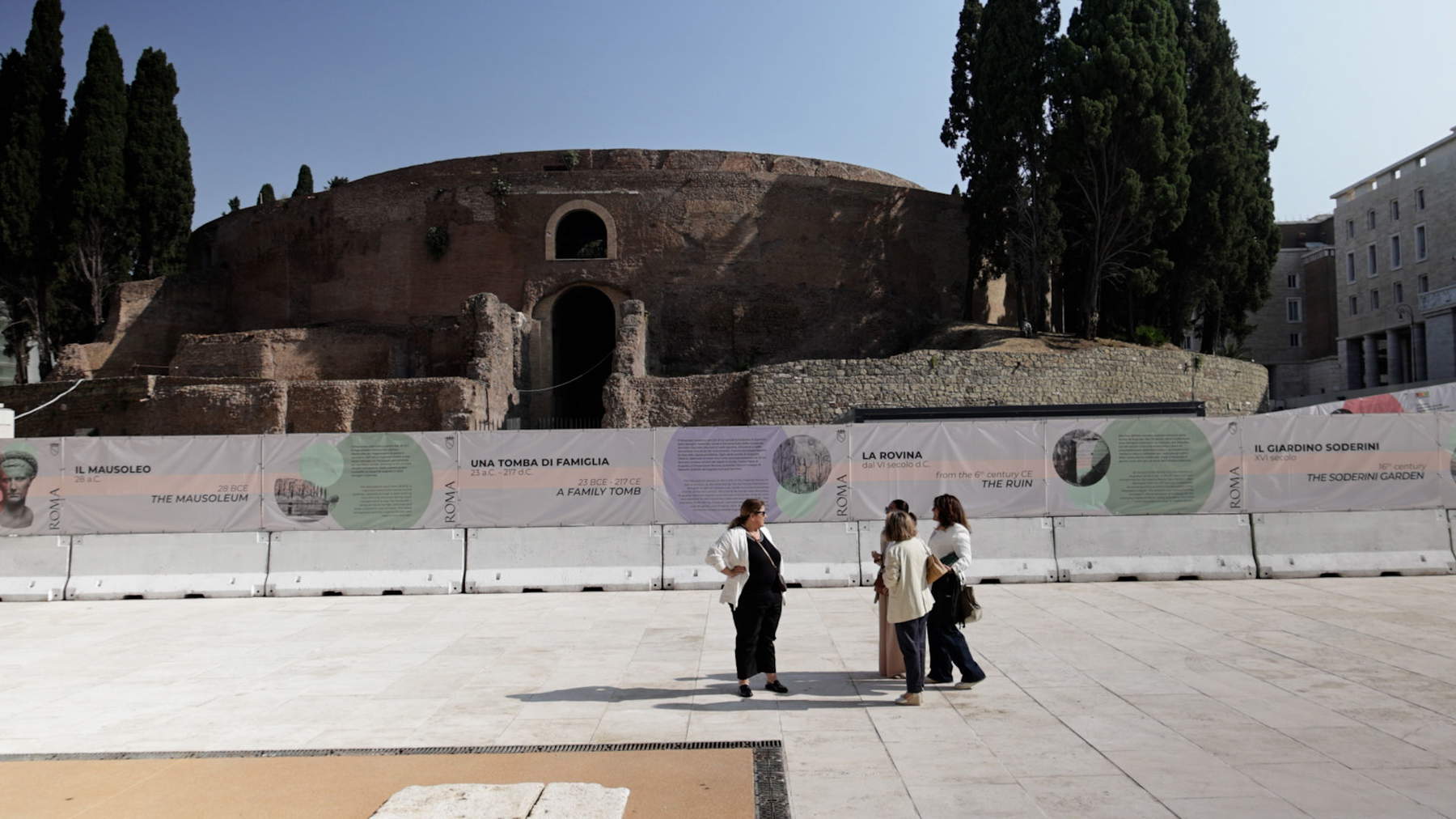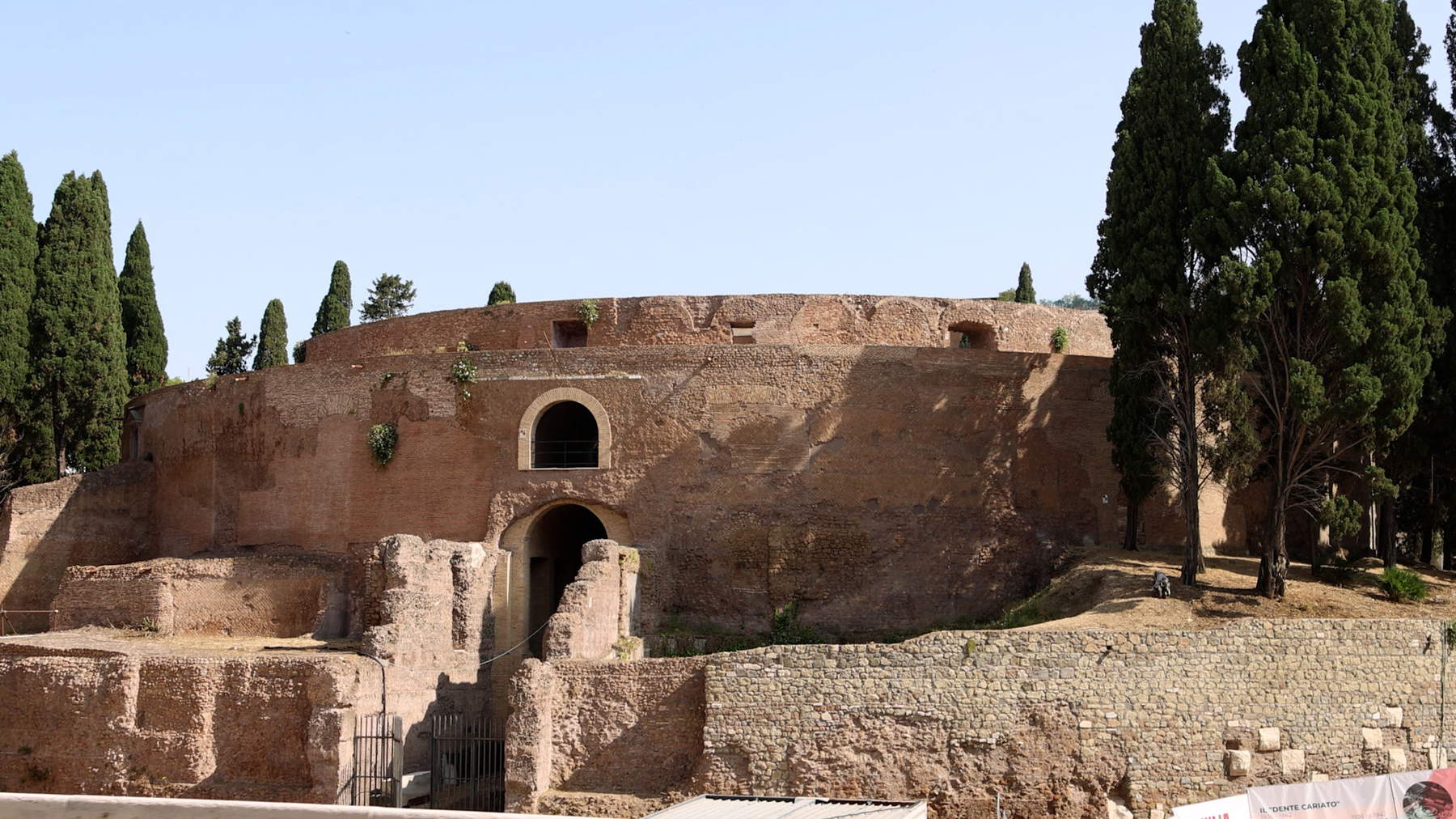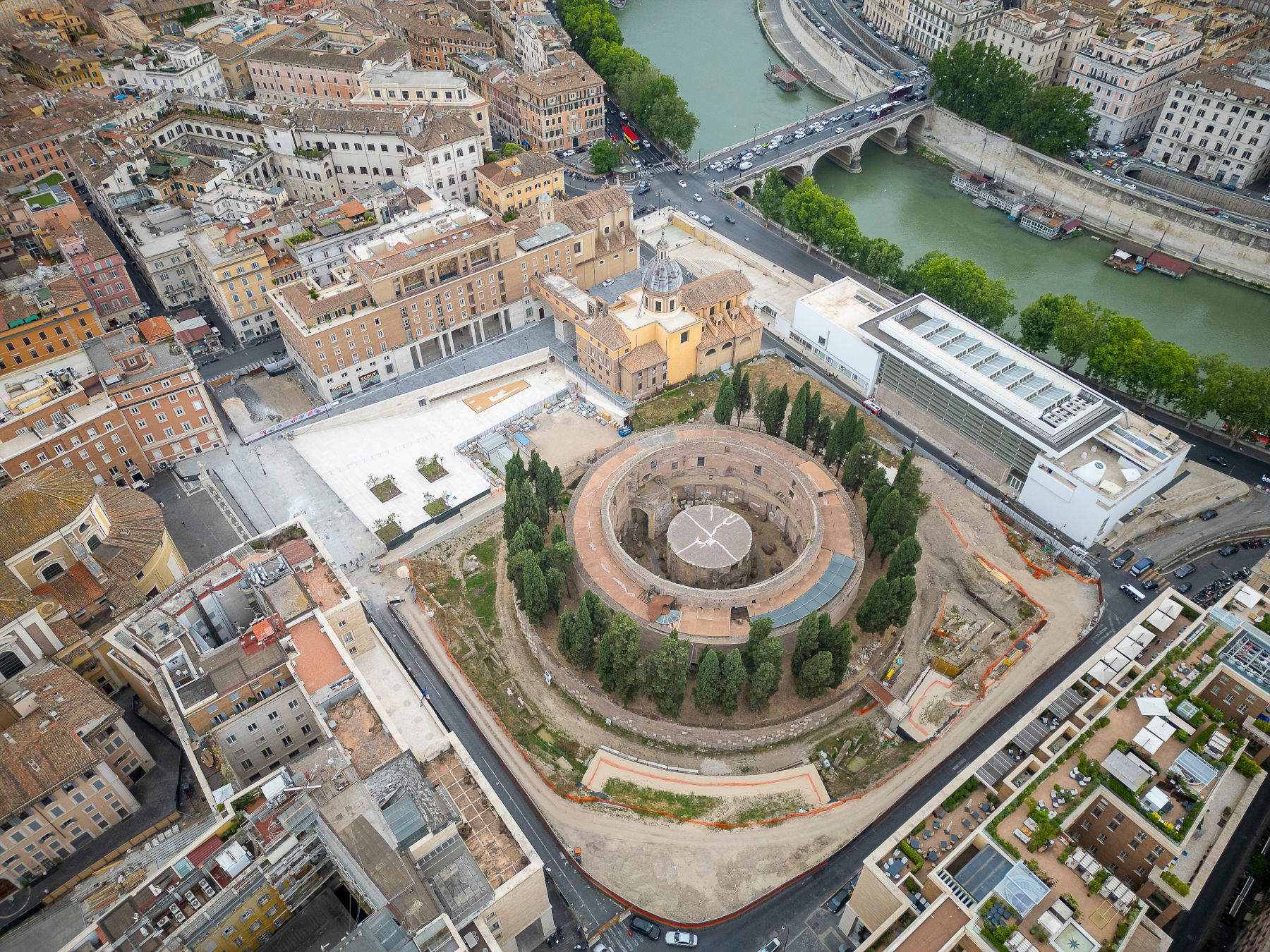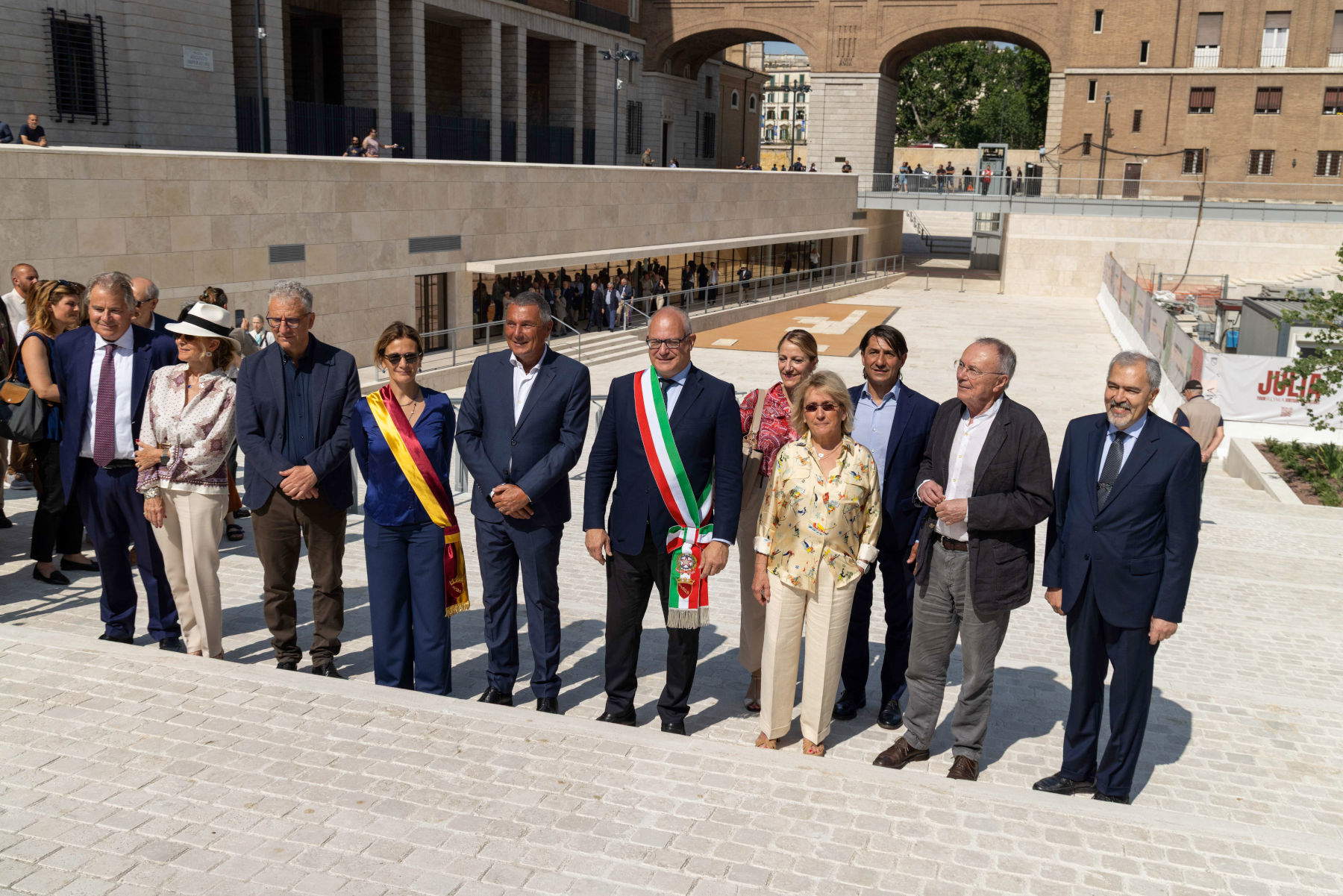Augustus Emperor Square at Rome is once again a living and integrated urban space, thanks to an architectural intervention that has transformed the area into a place of connection between past and present. With the official inauguration on June 6, 2025, a central phase of the redevelopment project that began in 2020 and was led by architect Francesco Cellini concludes. The intervention, developed by the group Urbs et Civitas and winner of the 2006 international competition, has restored usability to a historic area that had long been compromised, creating a dialogue between the stratifications of the ancient, modern and contemporary city. The new square, conceived as a pedestrian space and open to citizens, was designed to restore the relationship between the Mausoleum of Augustus and the surrounding urban context, which had long been altered by previous interventions.


“With the completion of the first lot of work, Augustus Emperor Square is finally coming back to life as a place of meeting and beauty,” says Rome Mayor Roberto Gualtieri. “This milestone marks the beginning of an exciting journey that will lead us to continue work within the year on the completion of the area surrounding the Mausoleum and, subsequently, to the musealization of the monument itself, built according to the design of one of the greatest living architects, Rem Koolhaas. It is a great thrill because we are giving back to the city one of its most iconic places, destined to become one of the most extraordinary squares in Rome and, therefore, in the whole world. An identity symbol that weaves millennial history with contemporary vision, ready to speak to the future and inspire citizens and visitors alike. I would like to extend heartfelt thanks to the TIM Foundation, for the extraordinary contribution that will make this rebirth possible, and to the Bvlgari Group, which with passion and foresight continues to invest in the enhancement of our city’s extraordinary cultural heritage.”
“Coming back to life in this magical place,” says Massimiliano Smeriglio, Councillor for Culture of Roma Capitale, “which houses the mausoleum of Emperor Augustus, the unforgettable protagonist of Rome Caput Mundi and a key figure in Roman history, is a great emotion. The intervention to create the new Piazza, conducted with the technical-scientific care of the Superintendence and carried out on the basis of the project coordinated by architect Francesco Cellini, returns to the city a prestigious urban space, which for too many years has remained hidden. It is essential that these places be preserved and cared for, but also made usable and accessible to citizens, so that their beauty and historical value can be appreciated by everyone. The final phase of restoration of the Mausoleum of Augustus will now begin, and thanks to the contribution of TIM Foundation, it will reopen to the public. In addition, thanks to the support of the Bvlgari Group, a memorable display will be created that reconnects this place of profound identity to contemporary Rome. An important day for the Capital, for its beauty, for its memory and, above all, for its future.”
“We are deeply proud to contribute to the design and realization of the interior museum displays of the Mausoleum of Augustus,” said Jean-Christophe Babin, CEO Bvlgari. “This extraordinary project allows us to actively participate in the enhancement of a masterpiece of classicism, returning it to the community in a new, accessible and engaging guise. Transforming such a symbolic place into an avant-garde museum space, open to all, represents for Bvlgari not only an act of patronage, but a heartfelt tribute to our Roman roots and the cultural heritage that continues to inspire our vision of the future.”


The work involved a central area of Rome, characterized by a unique historical and architectural density, where the tomb monument of Emperor Augustus, the church of San Rocco, the church of San Girolamo dei Croati, as well as numerous archaeological traces from different eras coexist. The square is developed on several levels, connected by two wide curbs that link Via di Ripetta and the apse of the church of San Carlo al Corso with the original elevation of the Mausoleum. Here, the pavement has been enhanced by recovering and exposing portions of first-century travertine, originally part of the structure. At the south end, a new space was created for a cafeteria and information point, complementing the services for the public. At the same time, major structural work was carried out: the consolidation of the embankment on which the church of San Rocco rests and that of the pier that connects it to San Girolamo dei Croati, as well as the adjustment of the sewage system, necessary to ensure the functionality of the area. The duration of the construction site was also prolonged due to the significance of the archaeological findings that emerged during the work. These included structures from the Late Antique period, mosaic fragments, a pumerian cippus and a marble head depicting a female deity. The finds, currently being studied and catalogued, will be integrated into the museum itinerary inside the Mausoleum, contributing to the historical narrative of the site.
In parallel with the opening of the plaza, a new phase of work destined for the completion of the restoration and musealization of the Mausoleum itself is beginning. This is the largest known circular tomb of antiquity, built to house the ashes of Augustus and other members of the Julio-Claudian dynasty. After the first phase was completed in 2019, the new works will focus on the interior spaces: trapezoidal concamations, corridors and the inner ring, as well as the burial cell. Electrical, lighting, video surveillance and heating systems will also be installed, compatible with the preservation of the historic structures. A new tour route will be created in the ring green area, where the existing cypress trees, now compromised, will be replaced. The construction of a hanging link between Pontiffs Street and the level of the former courtyard of Correa Palace is also planned. This structural element will be instrumental in physically reconnecting the Mausoleum to the urban fabric from which it had been separated in past centuries. The intervention includes special attention to the thermo-hygrometric balance of the rooms, through low-impact technologies, to ensure suitable environmental conditions both for public enjoyment and for the conservation of the ancient surfaces and materials. The project, under the technical direction of the Capitoline Superintendency of Cultural Heritage, has an estimated duration of 18 months and a total cost of 7,190,000 euros. A substantial part of the resources came from the TIM Foundation, which with a total allocation of 6 million euros ensured operational continuity for the restoration. As part of the grant, a documentary, The Mausoleum of Augustus - Memory for the future, was also produced, which traces the history of the monument by interweaving it with the biography of the first Roman emperor.
“For Fondazione TIM, contributing to the restoration of the Mausoleum of Augustus is a source of pride because we are giving back to the citizens a place and a symbol of Rome with a joint public-private effort,” commented Alberta Figari, president of Fondazione and TIM. “Investing in culture is not only a gesture of civic responsibility but also a conscious choice: it means generating value for the community, strengthening the sense of belonging and promoting a shared vision of the future. The TIM Foundation finances innovative projects in the social, educational and cultural spheres, always with the aim of responding to the real needs of people and territories. With this spirit, we chose to support the recovery of the Mausoleum: a concrete sign of the will to build bridges between the past and the future, generating a positive impact on society.”
The video is available on the Capitoline Superintendency’s YouTube channel and, shortly, also on TimVision. Private patronage also contributes to the enhancement of museum spaces. The Bulgari Group has donated 700,000 euros, earmarked for the design and fitting out of the Mausoleum’s larger spaces, as well as the creation of the inaugural exhibition.
 |
| Rome, Augustus Emperor Square reopens: new urban space between archaeology and contemporary architecture |
Warning: the translation into English of the original Italian article was created using automatic tools. We undertake to review all articles, but we do not guarantee the total absence of inaccuracies in the translation due to the program. You can find the original by clicking on the ITA button. If you find any mistake,please contact us.